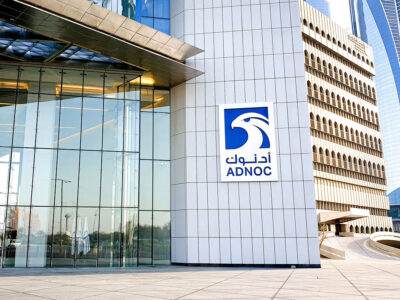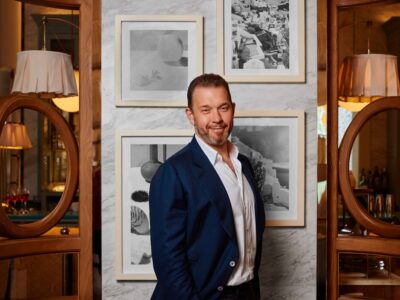Educating staff is difficult in today’s fast-paced kitchen environments. Here, six industry professionals talk about the need for on-the-job experience.
What type of training do you provide for staff?
Yves Givel: Each of our hotels has full training and development programmes in place with a training manager and additional operations trainers, depending on the size of the property.
This training team covers the core training for all employees, ranging from general orientation to service excellence skills, as well as leadership skills sessions.
In addition to both the core and leadership skills training, we also have a departmental skills training programme in place.
This is based on the tasks required for each position.
George Kunnappally: We conduct a three-day classroom session at our corporate headquarters in Bur Dubai.
The employees start by watching training videos with an instructor, which gives them an insight into their expected job profile.
Each employee is provided with a copy of the Charley’s operations manual, which discusses in detail all the methods of preparation for the menu items, pre-opening procedures, post-rush tasks, cleaning and maintenance of equipment and storage of food.
Training is also provided on supervisory and line-staff functions, with seperate modules for communications skills, up-selling techniques, and telephone etiquette.
Rodney Sims: Meat & Livestock Australia (MLA) provides training workshops covering all aspects of meat handling and food safety to a wide range of customers including importers, retailers, and chefs in the Middle East.
These customers are all importers and buyers of Australian meat, so the training addresses aspects such as meat handling, food safety, customer service and extensive meat quality attributes.
Training is provided on a monthly basis around the year by a MLA-certified master butcher and certified executive chefs qualified to provide training in the workplace to retailers and importers.
Prakesh Chugani: We have five levels on which we train our staff including technical, functional, IT and language skills.
Our group HR initiates the training programme by soliciting areas where training is required and then arranging for the personnel to receive the appropriate training.
For our outsourced staff, Dulsco has appointed a performance coach to focus on training.
Does your company conduct training in-house?
Wong Fatt Seng: The majority of the training programmes at our hotel are conducted in-house by internal associates – either the training manager or departmental trainers.
This is ideal as it allows a larger group to be trained at once.
It also allows for the creation of several different sessions, catering to the workers on different shifts.
In addition, there is training that is required on the job.
However, there are also some types of training that require external expertise.
This could mean having an external company conduct the training programmes in-house, within the hotel premises or enlisting some selected associates for an external training programme outside the hotel for team building, computer programmes, English language or specialised beverage training.
Kunnappally: Initial training and induction programmes are held at our corporate headquarters.
Once the classroom sessions are over and the employee has successfully completed a written examination, they move on to the store floor.
Here their training process continues in real life – no more simulation.
They interact with real customers and each new employee is assigned a mentor who takes care of them while on duty and ensures that they are smoothly integrated into the team.
Each store is equipped with a TV and DVD player in the back area so that the teams can watch the latest training and promotional videos without having to come to head office.
What elements of training are compulsory for all staff?
Givel: All our core training is compulsory for all employees, from line employees to supivisory staff including senior executives.
Our leadership skills from team leader level onwards.
Hyatt works with a training grid, which outlines compulsory training for each level.
This has to be achieved before staff can be promoted to the next level of responsibility.
This puts the responsibility for attending the relevant modules back in the employees’ hands.
Chugani: Technical skills and other soft skills such as communication and customer service are important for all staff.
The technical skills training for outsourced staff is normally provided by the client and Dulsco caters for all the rest.
Sims: The meat industry is highly sensitive as it has a direct impact on public health.
Hence, we take every aspect of our operations and training very seriously and all elements of a programme are compulsory, no matter how small they might appear.
Do you have any specialist training programmes?
Kunnappally: We have specific training programmes for each job category – be it cashiering, cooking, sampling, frying, topping and wrapping or taking customers’ orders over the telephone.
We also have a location-awareness training module for our delivery drivers.
Wong: At the Sheraton we have developed a programme called Service Culture Training, which is a branded guest service training programme for all Sheraton associates including management and non-management.
The training aims to build a branded service culture at the hotel and the associates go through various modules, learning about the Sheraton brand, the Sheraton culture to the Sheraton experience, to help them interact more effectively with guests.
This also ensures quality of service is consistent.
What are the greatest challenges in training staff?
Chugani: One of the biggest challenges is getting an evaluation done once the training has been completed, especially when the training is on soft skills.
Another challenge is to find free time for the personnel to attend training.
We are able to give personnel time away from their place of employment, but we often end up squeezing the training in to the time available.
Givel: Being a 24/7 business, it is sometimes difficult to ask employees to attend training.
In order to overcome this, we usually include training into working hours, or compensate staff if training is attended on days off.
The other challenge is to get the buy-in from our line managers, as they are the ones who have to ensure that their employees are attending the training.
Hyatt’s training philosophy is very strong, and cascades down from the corporate office, through to the general manager and the executive committee, which helps in getting the commitment from each of the different line-managers.
Kunnappally: Language and cultural barriers are our biggest challenges.
Our employees are sometimes not clear on the amount of hard work involved and the scope of work.
Our employees come from more than nine countries in the sub-continent and South East Asia, plus a few from Arabic-speaking countries.
Conveying the same message to all these employees in English and ensuring they understand is quite a challenge.
The cultural differences and sensitivities also need to be taken into consideration.
What may sound great to one group may be unacceptable to another.
As management, we need to find ways to appeal across all segments of the workforce.
We must inspire, motivate and energise everyone with our training programmes.
Sims: Language is the main challenge as some of our customers don’t speak English.
We used to overcome this obstacle by hiring an interpreter.
Now we have an Arabic-speaking staff member – certified executive chef Tariq Ibrahim – who is also a qualified trainer.
How do you monitor progress?
Kunnappally: We have a point system whereby the store management can compare classroom performance with actual store-level performance reports.
Wong: There are many ways we can monitor training progress.
It could be done through observation by the departmental trainers or the training manager for on-the-job training.
All departments are required to conduct minimum training hours per associate and this is monitored by the department head or training manager.
Constant evaluations are done via communication meetings, written tests, role plays, and so on.
In addition, the company’s Performance Management process is a specially-designed tool used to evaluate training progress.
Sims: Our training programmes are highly-focused to generate the desired outcomes.
During the training we keep a close eye on every trainee and make sure that instructions are fully understood.
The training programmes also include follow-up visits by MLA-certified trainers to retailers and to chefs in restaurants and hotels.
Chugani: There is a training plan written out at the start of the year, which is followed.
Efforts are made to satisfy all of the training needs and once the training is conducted, evaluation forms are filled out to establish its effectiveness.




